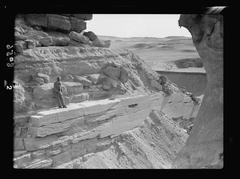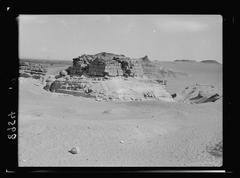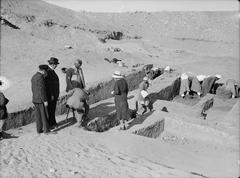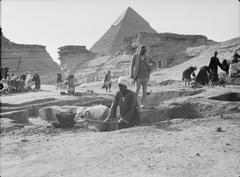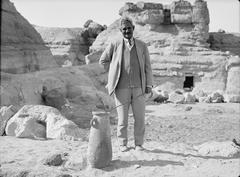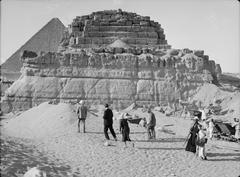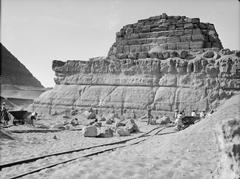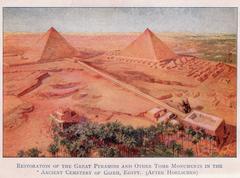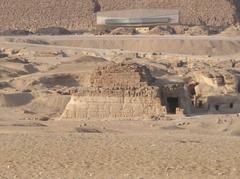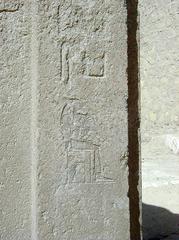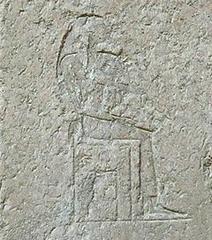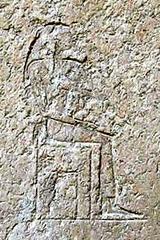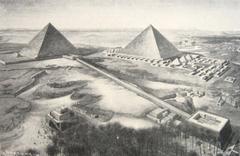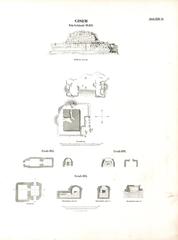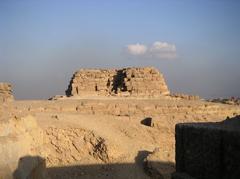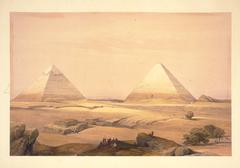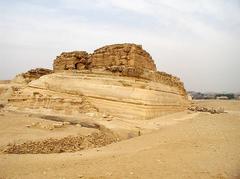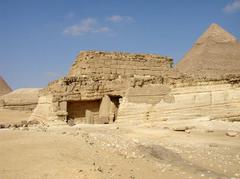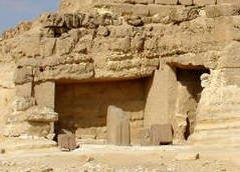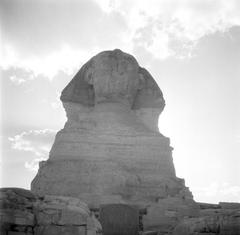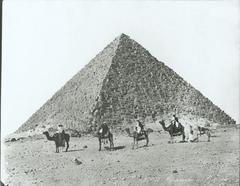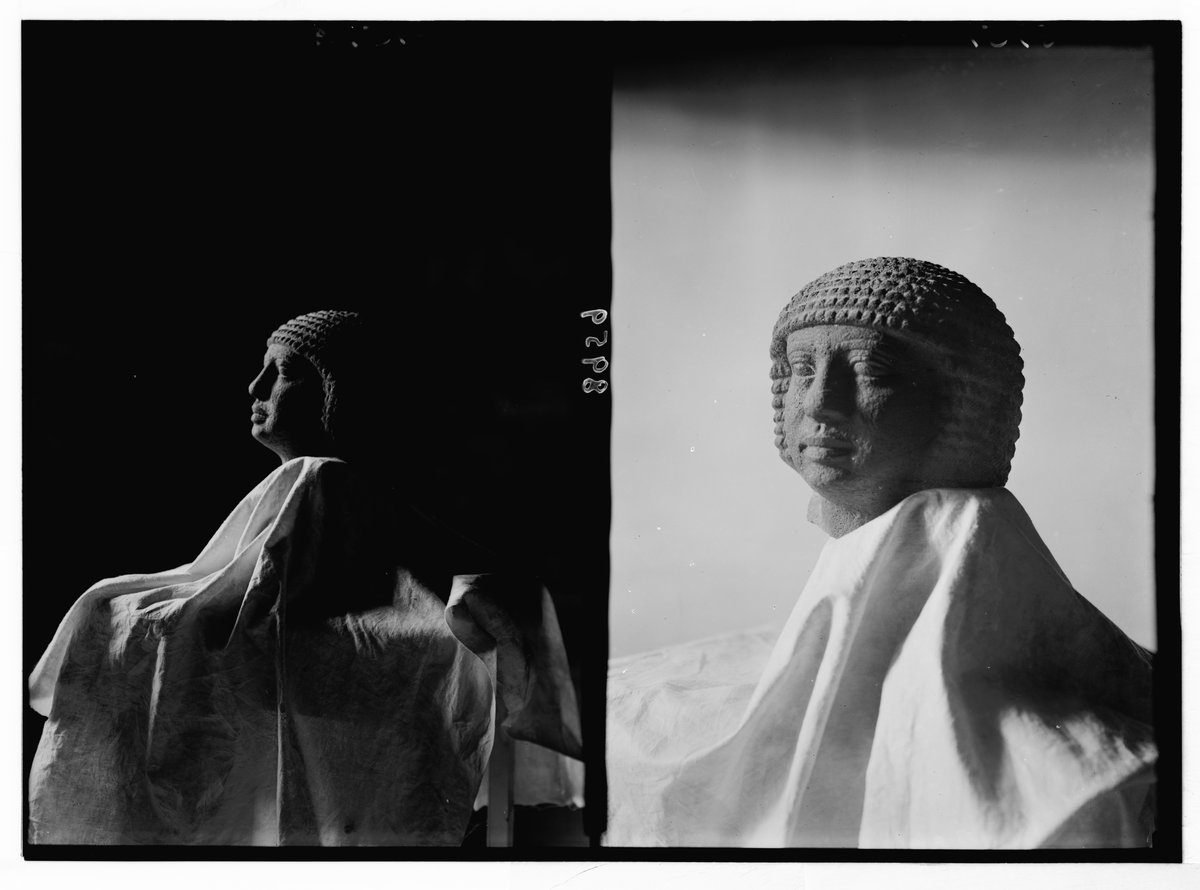
Pyramid of Khentkaus I: Visiting Hours, Tickets, and Historical Significance in Giza, Egypt
Date: 14/06/2025
Introduction
Nestled within the renowned Giza Necropolis, the Pyramid of Khentkaus I stands as a testament to the complexity and innovation of ancient Egyptian society. Though often overshadowed by the Great Pyramids, this monument reveals unique insights into the role of royal women, architectural experimentation, and the shifting religious landscape of the Old Kingdom. As both an archaeological site and a symbol of female power, the Pyramid of Khentkaus I invites visitors to explore a quieter, more contemplative facet of Egypt’s royal heritage.
This comprehensive guide covers everything you need to know about the Pyramid of Khentkaus I, including its historical background, architectural features, cultural significance, practical visitor information (such as opening hours and ticketing), accessibility, travel tips, nearby attractions, and frequently asked questions. Whether you’re a history enthusiast, a curious traveler, or a student of Egyptology, this article will help you plan a rewarding visit to one of Giza’s most intriguing ancient monuments.
For further scholarly research and detailed archaeological findings, consult the Giza Project at Harvard, Wikipedia, and Ancient Egypt Online.
Historical Context: Queen Khentkaus I and Her Significance
Khentkaus I was a prominent royal woman at the juncture between Egypt’s Fourth and Fifth Dynasties (circa 2494–2345 BCE). Her titles—such as “Mother of Two Kings of Upper and Lower Egypt”—and her depiction with royal regalia, including the uraeus and false beard, have sparked debates about her actual role: was she a queen consort, a regent, or possibly a female pharaoh in her own right? Her sons, Sahure and Neferirkare, became the first two kings of the Fifth Dynasty, underscoring her key position in royal succession (Giza Project, Harvard; Wikipedia).
The construction of her own monumental pyramid complex, rather than a subsidiary tomb, reflects her elevated status and the respect she commanded in a period marked by dynastic transition and the growing prominence of royal women.
Architectural Features and Innovations
The Pyramid of Khentkaus I is renowned for its hybrid “pyramid-mastaba” design—a two-stepped structure with a rectangular base, likely reflecting a unique phase of architectural experimentation. Measuring approximately 45 by 45 meters at its base and originally rising to about 17 meters, the monument was built with local limestone and once featured fine Tura limestone casing (Giza Project, Harvard; Ancient Egypt Online).
Key features include:
- Stepped Core: The lower step is carved directly from bedrock, while the upper portion is constructed from stone blocks, possibly intended to be finished as a true pyramid.
- Mortuary Temple: Located on the eastern side, the temple housed offering halls and storerooms, where rituals sustained the queen’s spirit in the afterlife.
- Boat Pit: The presence of a boat pit (housing the “night boat” of Re) reflects the integration of solar cult beliefs into funerary practice.
- False Doors and Chapels: Essential elements of Old Kingdom mortuary architecture, these allowed the deceased’s spirit to receive offerings.
- Pyramid Town: An adjacent L-shaped settlement, purpose-built for priests and workers, illustrates the social organization supporting the queen’s mortuary cult (Wikipedia).
The complex’s design and associated town highlight both the evolving architectural styles of the era and the expanding role of women in royal and religious life.
Religious and Cultural Importance
The pyramid’s construction coincided with the rise of the solar cult of Ra, a movement that increasingly influenced royal ideology in the Fifth Dynasty. The layout and orientation of the complex, especially the east-facing mortuary temple, reflect solar symbolism and the integration of new religious beliefs into traditional funerary practices (Britannica: Pyramids of Giza).
Khentkaus I’s ambiguous titles and unique iconography—portrayed with both feminine and pharaonic attributes—suggest she served as a bridge between the Fourth Dynasty’s male-dominated kingship and the Fifth Dynasty’s more inclusive approach to royal authority. Her mortuary cult was maintained for generations, further indicating her lasting religious and cultural significance.
Archaeological Discoveries and Ongoing Research
Excavations have uncovered reliefs, statues, and inscriptions confirming Khentkaus I’s status, along with evidence of an organized workers’ village and associated workshops. Finds such as granite sarcophagus fragments, offering tables, and pottery shed light on both the queen’s life and the daily routines of those who maintained her cult (Giza Project, Harvard; Youregypttours).
Modern research employs technologies like ground-penetrating radar and 3D modeling to further understand the layout, construction, and social dynamics of the site. Notably, Khentkaus I’s actual remains have never been found, adding to the ongoing mystery surrounding her final resting place and the ultimate fate of her tomb (The Brain Chamber).
Visitor Information: Hours, Tickets, and Accessibility
Visiting Hours
- Standard Hours: Daily, 8:00 AM to 5:00 PM (subject to change during holidays or special events).
- Always check for seasonal updates or closures before your visit.
Tickets and Admission
- General Admission: Entry to the Giza Plateau includes access to the Pyramid of Khentkaus I; typically, no separate ticket is required.
- Ticket Purchase: Available at the main Giza Plateau entrance or online through authorized portals. Prices vary for adults, students, and foreign visitors.
- Advance Booking: Recommended during peak seasons to avoid queues.
Accessibility and Facilities
- Terrain: The area features uneven, sandy ground, which can be challenging for visitors with mobility issues.
- Facilities: Basic restrooms and refreshments are available near the main entrance, but not directly at the pyramid site.
- Wheelchair Access: Limited; assistance may be necessary.
Travel Tips and Best Practices
- Best Times to Visit: Early morning or late afternoon for cooler temperatures, fewer crowds, and optimal photography lighting.
- Dress Code: Lightweight, breathable clothing, sun protection (hat, sunglasses, sunscreen), and sturdy walking shoes.
- Guided Tours: Hiring a licensed Egyptologist or professional guide is highly recommended for deeper insights.
- What to Bring: Water bottle, snacks, and a charged camera or smartphone.
- Site Etiquette: Respect marked paths, avoid touching or climbing on ruins, and do not remove any stones or artifacts.
Nearby Attractions
While at Giza, consider visiting:
- Great Pyramid of Khufu
- Pyramids of Khafre and Menkaure
- Solar Boat Museum
- The Great Sphinx
- Other Queen’s Pyramids and Mastabas
These sites are within walking distance and offer a fuller understanding of the Giza Necropolis.
Special Considerations
- Weather: The best time to visit is from October to April; summer temperatures can exceed 35°C.
- Events: Light shows or special exhibitions may affect access—check ahead for event schedules.
- Safety: Petty crime is rare, but always keep valuables secure and avoid unofficial guides.
Frequently Asked Questions (FAQ)
Q: What are the opening hours?
A: Generally, 8:00 AM to 5:00 PM daily; confirm locally for updates.
Q: Is a separate ticket required?
A: No, entry to the Giza Plateau covers access to the Pyramid of Khentkaus I.
Q: Can I enter the pyramid?
A: The interior is closed for preservation, but the exterior and associated complex are accessible.
Q: Are guided tours available?
A: Yes; many tours include the site, and private guides can offer specialized insight.
Q: Is the site wheelchair accessible?
A: The terrain is challenging; wheelchair access is limited.
Q: Is photography allowed?
A: Photography is permitted in open areas, but professional equipment requires special permission.
Conservation and Ongoing Research
Continued conservation efforts focus on preserving the mudbrick and stone structures, protecting them from erosion and environmental damage. Archaeological research is ongoing, with new discoveries contributing to our understanding of Khentkaus I’s role and the monument’s function within the broader Giza landscape (Ancient Egypt Online; Giza Project, Harvard).
Enhancing Your Visit
- Combine with the Grand Egyptian Museum: To see artifacts related to Khentkaus I and Old Kingdom Egypt.
- Download the Audiala App: For interactive maps, updates, and expert commentary.
- Stay Connected: Follow official social media channels for news on special events, discoveries, and visiting tips.
Conclusion
The Pyramid of Khentkaus I offers a rare and rewarding glimpse into the complexities of ancient Egyptian society, royal succession, and religious innovation. Its distinctive design, association with a powerful queen, and tranquil setting make it a standout destination for those eager to move beyond Giza’s better-known monuments. By planning your visit with the information above, you can enjoy a memorable and insightful experience at this hidden gem.
Explore more with our related articles and the Audiala app, and stay informed about Egypt’s captivating ancient wonders.
References and Further Reading
- Giza Project, Harvard: Pyramid of Khentkaus I Full Report
- Wikipedia: Pyramid of Khentkaus I
- Ancient Egypt Online: Khentkaus I Tomb
- Britannica: Pyramids of Giza
- Youregypttours: Pyramid of Khentkaus I
- The Brain Chamber: Pyramid of Khentkaus I

